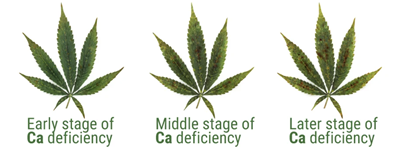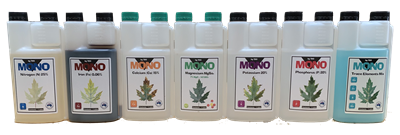THC Mono Calcium (Ca)
$40.00
THC Mono Calcium (Ca)
Basic understanding of plant health comes from the soil they grow in. Their nutrition is vital to their health and overall sustainability, so it’s essential for plants to get all of the macronutrients necessary to thrive. However, there are times we still struggle with a plant mysteriously dying off long before its time. It happens, but this is often indicative of a bigger problem with the nutrients in the soil. If one plant is struggling, others nearby may be too.
CALCIUM DEFICIENCY SYMPTOMS
Calcium acts in concert with other important compounds to ensure overall plant health and vitality. A lack of calcium can mimic other deficiencies since the plant's ability to maintain essential biological functions is compromised.
The following represent symptoms of a calcium deficiency:
New growth at the top of the plant is primarily affected.
Young growth slows, new leaves curl. Fresh growth is twisted and dies off quickly. Young shoots are purple or yellow.
The root system is compromised so fewer nutrients will be absorbed. Overall growth slows and plants lose their lustre.
Flower growth severely affected, especially at peak florescence. Young calyces are crinkled, distorted and don't fill out.
Large, light brown necrotic spots form on leaves. Leaf edges mottle and turn brown. Leaves become yellow as the problem advances.
Branches are weak and break easily. Stalks may become hollow and rot inside.
Plants do not respond well to heat.
Roots become brown and are susceptible to slimy root rot and other pathogens.

Calcium (Ca) deficiency is a plant disorder that can be caused by insufficient level of available calcium in the growing medium, but is more frequently a product of low transpiration of the whole plant or more commonly the affected tissue. Plants are susceptible to such localized calcium deficiencies in low or non-transpiring tissues because calcium is not transported in the phloem. This may be due to water shortages, which slow the transportation of calcium to the plant, poor uptake of calcium through the stem, or too much nitrogen in the soil.
Possible causes of Calcium deficiency may be acidic, sandy, or coarse soils often contain less calcium. Uneven soil moisture and overuse of fertilizers can also cause calcium deficiency. At times, even with sufficient calcium in the soil, it can be in an insoluble form and is then unusable by the plant or it could be attributed to a "transport protein". Soils containing high phosphorus are particularly susceptible to creating insoluble forms of calcium.
Calcium deficiency symptoms appear initially as localized tissue necrosis leading to stunted plant growth, necrotic leaf margins on young leaves or curling of the leaves, and eventual death of terminal buds and root tips. Generally, the new growth and rapidly growing tissues of the plant are affected first. The mature leaves are rarely if ever affected because calcium accumulates to high concentrations in older leaves.
.png.aspx?width=400&height=334)
A calcium deficiency will be evident in weak leaves that have yellow spots. Sometimes they will even begin to rot. This happens because calcium supports a plant’s structural cell walls, so a plant will gradually weaken without it.
Crushed eggshells are primarily composed of calcium carbonate and can bring calcium back to the soil when buried well into the area around the calcium-deficient plant.
This infographic succinctly details the signs for each deficiency and the natural solutions for each.
Of course, other ways to improve soil quality are by growing diverse number of plants and introducing organic matter and compost. The priority is to always work with nature, aiding when needed, rather than controlling and stopping its natural processes.
Best and fast way to rectify Calcium deficiency is to use THC Mono Calcium or THC CalMag

Other THC Mono nutrients available